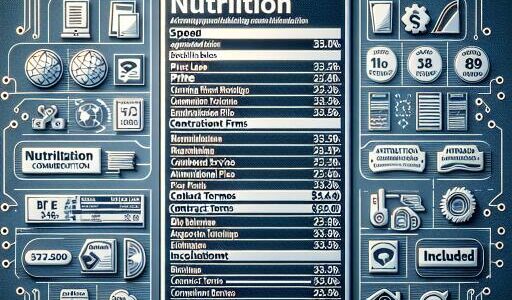Exploring the Vanguard of Financial Security: How Modern Technology Safeguards Your Wealth
In an age where digital banking and cryptocurrencies reign supreme, protecting financial assets has never been more critical. Innovations in technology have risen to the occasion, offering sophisticated methods to secure our digital transactions and personal wealth from potential threats. This transformation has paved the way for a new era of financial security, harnessing the power of encryption, multi-factor authentication, and more to keep our assets safe.
The Bedrock of Security: Encryption
At the heart of digital security lies encryption, a powerful tool that renders critical information unreadable to anyone without the proper decryption key. Financial entities deploy encryption to guard data during its transmission and while it’s stored, ensuring that sensitive details like online banking credentials and transaction specifics remain out of reach from cybercriminals.
Encryption comes in different flavors, such as symmetric, where the same key encrypts and decrypts data, and asymmetric, which employs a pair of keys for the same task. This variance caters to different needs, from speeding up the encryption process for large volumes of data to securing communication channels through technologies like HTTPS.
A Stronger Forge: Multi-Factor Authentication and Biometrics
Adding an extra layer of defense, multi-factor authentication (MFA) requires a combination of verification methods, including knowledge (like a password), possession (such as a smartphone), and inherence (fingerprint or facial recognition). This method significantly hampers unauthorized access, as compromising one factor alone isn’t enough to gain entry.
Biometrics have also surged in popularity, offering a secure and convenient way to authenticate identity. Technologies like Apple’s Face ID or Touch ID have become staples in mobile banking, allowing users a seamless yet secure way to conduct their financial transactions.
The Next Frontier: AI, Machine Learning, and Blockchain
Artificial Intelligence (AI) and Machine Learning (ML) are at the forefront of combating financial fraud, employing sophisticated algorithms to sift through transaction data in search of irregularities. By learning from historical data, these systems can identify fraud in real-time, thereby acting swiftly to block suspicious transactions.
Blockchain technology further enhances transaction security through its decentralized and immutable ledger system. This setup ensures that recorded transactions are virtually tamper-proof, offering a robust solution for securing digital transactions and cryptocurrency exchanges.
Modern Frameworks: SASE and Zero Trust Architecture
The advent of Secure Access Service Edge (SASE) and Zero Trust Architecture represents a paradigm shift in securing digital assets amidst an increasingly cloud-centric world. SASE merges network security with WAN capabilities to facilitate safe access across a scattered workforce, while Zero Trust insists on continuous verification of all users, aiming to minimize insider threats and unauthorized access.
Regulatory Compliance: The Safety Net
Regulations like GDPR and PCI DSS mandate stringent security protocols for handling personal and financial information. Compliance with these standards is not optional; it’s integral to protecting consumers from data breaches and financial fraud, offering an added layer of security through regulatory oversight.
Tokenization and Mobile Payments: The New Norm
Mobile payment technologies, such as Apple Pay and Google Wallet, have revolutionized the transaction landscape by employing tokenization. This process secures transactions by replacing sensitive payment info with unique identifiers, bolstered by biometric verification methods for an added security layer.
Incident Response: The Aftermath of Breaches
Despite rigorous security measures, breaches can occur. When they do, financial institutions rely on incident response plans to mitigate impacts, involving steps to contain and eradicate threats, recover systems, and communicate efficiently with affected customers.
Your Role in Financial Security
While financial institutions go to great lengths to secure assets, consumers have a critical role in safeguarding their financial health. Practices such as employing strong, unique passwords, using MFA, regularly monitoring transactions, and staying vigilant against phishing attempts are fundamental in enhancing personal financial security.
Updating your devices and applications to incorporate the latest security patches plays a crucial role in fending off potential threats, ensuring that your financial assets remain shielded in this ever-evolving digital landscape.









